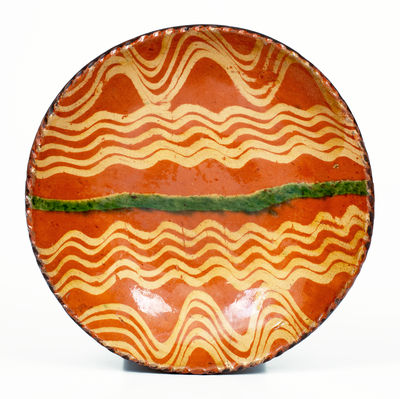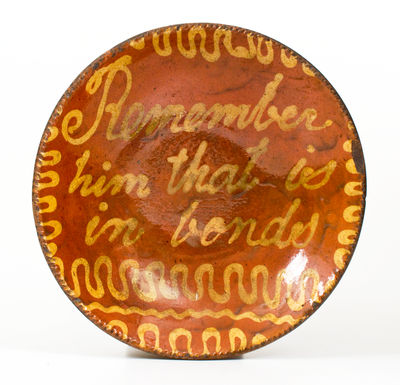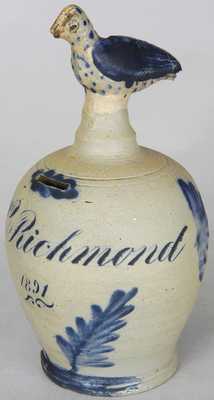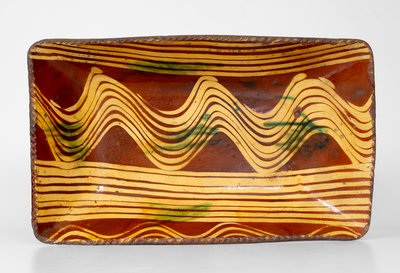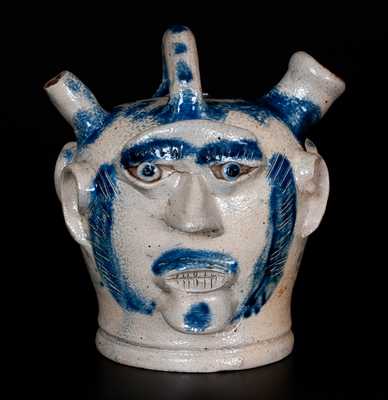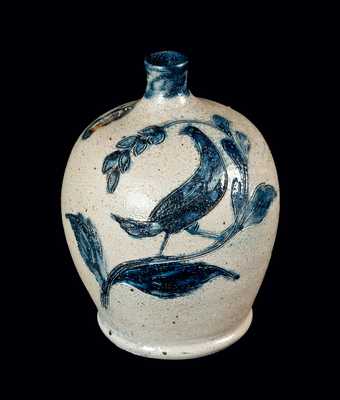Oversized Rustic Pottery Flowerpot with Lizard-Chasing-Fly Motif, Signed "F. Gossin", Frederick Gossin, Philadelphia, PA, circa 1880, molded flowerpot with flared base, the bark-like surface with a relief design of a lizard chasing a fly, repeated three times around the body. Lizard features hand-incised scales and incised details to face and feet. Rim with relief braided twig motif. Base with relief crossed and nailed board motif. Bottom of flowerpot is fashioned with five original drain holes and is raised within the nailed-board base to prevent it from sitting in water. Faint traces of green paint to surface. Base with incised signature, "F. Gossin" for Frederick Gossin, a Philadelphia potter who had immigrated from France, where he had clearly been brought up in the trade. The Gossin family were well-known French makers of "terra cotta ware," here used to describe less the type of clay being used than the process of molding pottery into what could be very intricate and complicated ornamental objects. Born in Paris, Gossin first appears in the 1867 Philadelphia city directory as a "sculptor" living on Cherry Street. By 1869, he formed a partnership with a man named Simon McMahon, and the two began selling the aformentioned molded "terra cotta," also on Cherry Street; this partnership dissolving about 1873, around1883 Gossin moved up to North 11th Street, and continued to trade there until 1893, dying in 1898 after a bout with cancer. The surfacing of this flowerpot has revealed a newly-discovered American ceramic artist in a way similar to, say, George Ohr or Texarkana Pottery's Jacob Bachley. And like Ohr and Bachley, Gossin seems to have been keen on exhibiting his ware and trying to show the world what he was capable of; he was one of many American exhibitors at the 1876 Philadelphia Centennial International Exposition, the first true American World's Fair, alongside potters like Richard C. Remmey, John Fritz and Baltimore's Maulden Perine. A wonderful example of Philadelphia pottery that provides a great window into the ceramic spirit of the day. Provenance: Purchased by the consignor in the 1980s in Illinois. A 1 3/4" chip to base. A 2 1/2" flake to inner edge of underside. Other lesser chips to base area and an additional lesser chip to underside. H 14 1/2" ; Diam. 15 3/4".










